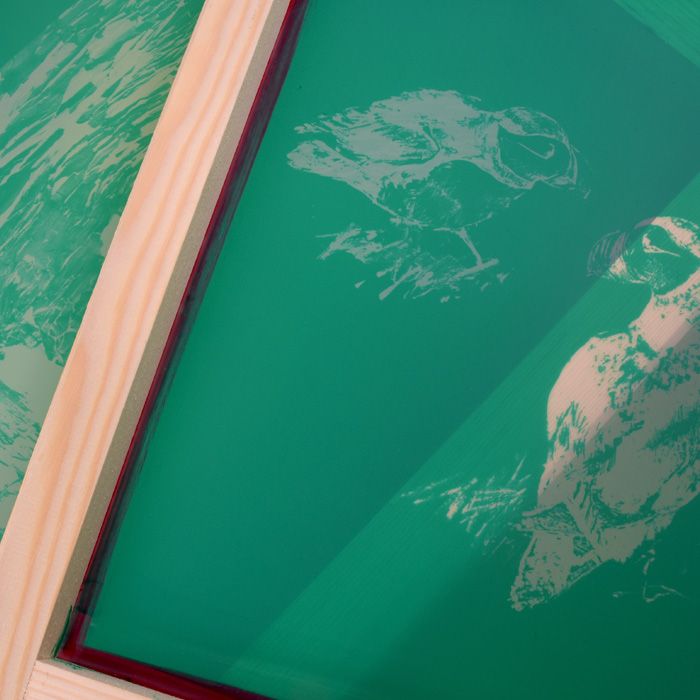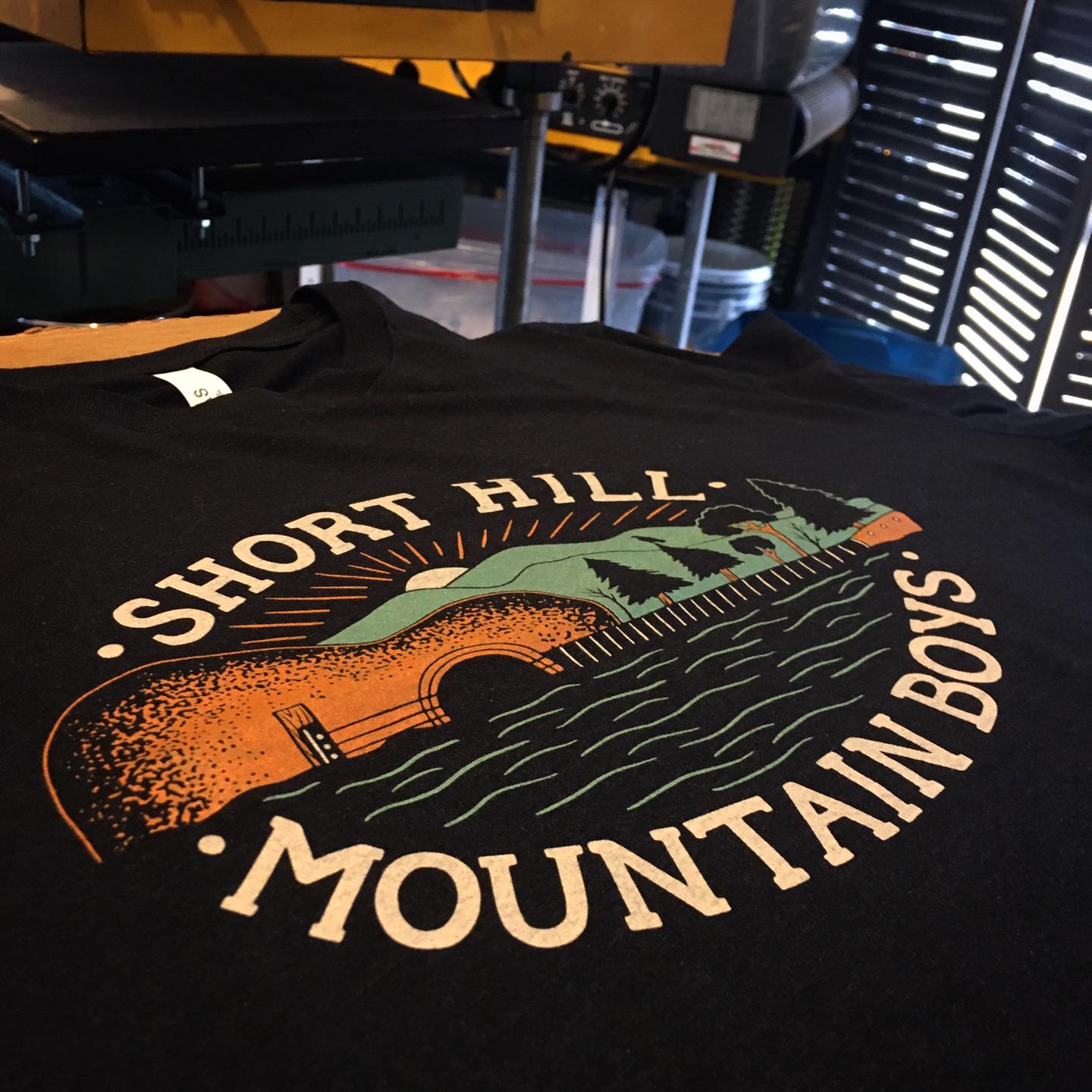Premium Screen Printing Kit for Business Startups
Premium Screen Printing Kit for Business Startups
Blog Article
Display Printing Uncovered: Whatever You Required to Understand About Tee Shirt and Garment Printing Methods
Display printing is a fascinating method that combines art with method, offering endless possibilities for creativity. All set to check out the essential elements that make display publishing an art form?
The Essentials of Display Printing: Just How It Functions
When you dive right into display printing, you'll uncover it's both an art and a science. At its core, display printing includes creating a pattern, or screen, that enables ink to pass with just in details locations.
Following, you'll blend your inks and prepare your printing surface area. Position the screen over the fabric, then make use of a squeegee to push ink through the screen onto the garment. This procedure calls for precision, as you desire clear, dynamic prints. After printing, you'll heal the ink with warm, ensuring it complies with the material and lasts via cleans. Each action is vital, and understanding them will raise your display printing skills, changing straightforward garments into unique, meaningful items.
Sorts Of Screen Printing Methods
When you realize the essentials of display printing, it's time to check out the different strategies that can boost your styles. One prominent approach is standard screen printing, where ink is pushed via a stenciled screen.
An additional alternative is plastisol printing, understood for its toughness and dazzling shades, making it a favored for lots of brands. Experiment with halftone printing to develop slope effects and detailed styles.
Vital Equipment for Screen Printing
To accomplish spectacular outcomes in display printing, having the right equipment is essential. You'll need a sturdy screen printing framework, which holds the mesh that transfers your style onto the garment. Next, purchase premium squeegees; these are crucial for applying ink equally throughout the screen. You'll likewise require a good direct exposure unit to develop your displays, along with a washout cubicle for cleansing them after usage. A reputable warmth source, like a conveyor dryer or warmth press, is important for curing your prints to assure long life. Don't fail to remember a proper work area, equipped with tables and storage for your materials. Finally, protective equipment, such as masks and handwear covers, will certainly maintain you risk-free from chemicals and inks. With the right devices, you'll be well on your means to generating professional-quality prints.
Picking the Right Inks and Materials
When choosing inks and materials for screen printing, you need to take into account the sort of ink that functions finest for your project. Think regarding textile compatibility to assure your layouts look last and great long. Discover green ink options to make your printing procedure more lasting.
Kinds of Display Inks
Selecting the right screen ink is vital for achieving vibrant, resilient prints that satisfy your project's demands. There are numerous types of display inks to check out. Specialized inks, such as glow-in-the-dark or metal, can include unique results to your designs.

Fabric Compatibility Considerations
Understanding textile compatibility is important for attaining top quality display prints, especially because different products respond distinctively to various inks. Always examine your inks on sample material to guarantee they stick effectively and preserve shade honesty. Furthermore, maintain in mind that textile weight and texture can influence the last end result, so selecting the appropriate ink and material combo is vital for your task's success.
Eco-Friendly Ink Options
Green inks are coming to be a prominent choice for screen printers that desire to reduce their environmental effect while preserving top quality. When choosing inks, consider water-based inks, which are less dangerous and less complicated to cleanse up contrasted to standard solvents.
In addition, try to find inks made from renewable energies, such as soy or vegetable-based choices. By selecting the best inks and products, you'll not only develop stunning layouts but additionally add to a much more lasting printing process. Make the button, and your prints will certainly show your dedication to the atmosphere!
Preparing Your Style for Display Printing

Submit Format Needs
To assure your layout looks sharp and vibrant on material, you'll require to pay close focus to file format needs for screen printing. Beginning with vector documents like AI or EPS, as they can be scaled without shedding high quality. If you utilize raster pictures, choose high-resolution data, such as TIFF or PNG, ideally at 300 DPI. Avoid using JPEGs, as they can shed clearness when resized. Also, make certain your design has a transparent background to avoid undesirable white sides on your prints. Keep shade settings in mind; CMYK is typical for display printing, so transform your RGB develops appropriately - screen printing kit. By following these standards, you'll establish your artwork up for an effective print.
Color Splitting Up Techniques
Shade separation is a vital step in preparing your design for display printing, and understanding it can considerably enhance your print top quality. You'll require to break your style into individual shades, as each shade needs a separate screen throughout printing. This precision not just guarantees exact look at this now shade representation but also enhances the printing process.
Resolution and Size
Accomplishing the most effective outcomes in display printing starts with assuring your layout has the right resolution and dimension. Ideally, your art work needs to go to least 300 DPI (dots per inch) for sharp, clear prints. If you utilize reduced resolution, your final item may look pixelated and unprofessional.
When it pertains to dimension, think about the measurements of your print area. Design your art work to match the last print dimension, ideally developing it in the real dimensions you'll be publishing. This means, you'll stay clear of any unexpected scaling concerns.
Constantly inspect your style in both vector and raster layouts. Vector graphics can be scaled without shedding quality, making them optimal for display printing. Preparing correctly will guarantee your design looks impressive on every garment!
Step-by-Step Display Printing Process
Screen printing is a vibrant process that allows you to develop vivid layouts on different surface areas. To get going, you'll need a display, solution, and your picked ink. Prepare your display by cleansing it extensively. Next off, apply the emulsion uniformly and let it dry in a dark area. As soon as dry, subject your screen to light with your layout put on it, which will certainly harden the emulsion where the light hits, developing a stencil - screen printing kit.
After rinsing the unexposed emulsion, content your display prepares. Establish it up on your printing surface area and align your garment underneath it. Pour ink onto the screen and make use of a squeegee to press the ink via the pattern onto the material. Raise the display very carefully and let the print completely dry. Lastly, cure the ink making use of heat to ensure resilience. That's it! You have actually successfully display printed your layout.
Tips for Successful Screen Printing Projects
While you're diving right into your screen printing jobs, remember that prep work is essential to success. Beginning by collecting all your materials-- inks, squeegees, garments, and displays. A tidy office aids stop undesirable errors, so neat up prior to you start.
Next, confirm your artwork is high-resolution and properly sized for your garment. Check your screen for proper exposure and tidy it extensively to stay clear of spots. When blending your inks, comply with the maker's standards to accomplish the right uniformity.
Throughout printing, use also pressure with your squeegee for consistent outcomes. Don't hurry; take your time to validate each print satisfies your standards. After you could try here printing, allow your garments dry totally prior to managing or packaging them.
Finally, always keep an example of your job for future recommendation. In this manner, you can examine your progression and improve your techniques gradually. Happy printing!

Regularly Asked Questions
The length of time Does It Take to Establish a Screen Printing Job?
Establishing a screen printing task normally takes about 30 minutes to an hour. You'll prepare the screens, mix inks, and adjust the press. The time differs based on complexity and experience, so remain arranged!
Can I Publish on Different Fabric Keys In Making Use Of the Same Method?
Yes, you can print on various textile kinds using the same strategy, however you'll require to change your setups and inks. Some textiles absorb ink in different ways, so experimenting guarantees the very best results for each and every product.
What Are Common Mistakes to Avoid in Screen Printing?
When display printing, avoid usual mistakes like utilizing the incorrect ink, disregarding appropriate exposure times, or missing pre-press checks. Constantly evaluate your arrangement and preserve tidy screens to guarantee quality outcomes each time.
Just How Can I Properly Clean and Keep My Display Printing Tools?
To correctly clean and keep your display printing equipment, you should on a regular basis clean displays with appropriate solvents, check mops for wear, and assure all devices are kept dust-free and dry. Uniformity boosts and avoids expensive repairs performance.
Is Display Printing Eco Pleasant Compared to Other Techniques?
Screen printing can be much more eco-friendly than other approaches, specifically if you utilize water-based inks and eco-conscious materials. By picking lasting materials and practices, you lower waste and decrease your influence on the planet.
Display Printing Uncovered: Everything You Need to Know Regarding Tee and Garment Printing Strategies
At its core, screen printing entails producing a stencil, or display, that allows ink to pass through just in certain areas. Placement the screen over the material, then utilize a squeegee to push ink via the screen onto the garment. One popular approach is typical display printing, where ink is pressed via a stenciled screen.When picking inks and products for display printing, you need to take right into account the type of ink that functions best for your task.
Report this page